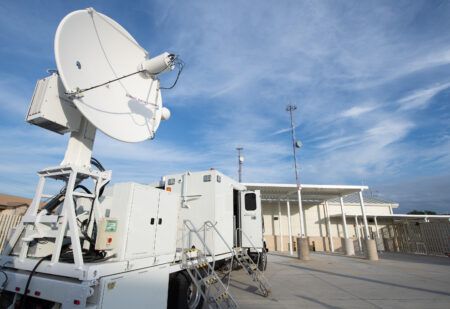Curtiss-Wright has congratulated Airbus on successfully conducting the first test flight demonstration of a connected airborne battlespace scenario with a modified-A310 Multi Role Tanker Transport aircraft.
The test flight, which was held earlier this summer, was part of the development of Airbus’ Network for the Sky (NFTS) program, which transformed the aircraft into a secure high-speed communications node.
The demonstration was deployed on an Airbus A310 Multi Role Tanker Transport (MRTT) aircraft and simulated the establishment of multi-Mbit/s wideband communication links between the MRTT, ground forces operatives, a fighter jet, and a combined air operations center (CAOC) on the ground.
The successful test flight will allow the MRTT to act as a high-end communication node in a NFTS setup. In October last year, Airbus demonstrated the use of a high-altitude balloon for the same purpose.
NFTS will enable aircraft, UAVs, and helicopters that currently use networks with limited bandwidth and interoperability to form an integral part of high-speed military networks.
The NFTS program, which is expected to complete next year, is part of Airbus’ Future Air Power project and is fully aligned with the development of the European Future Combat Air System (FCAS).
Lynn Bamford, senior vice president and general manager, defense and power for Curtiss-Wright, which supplied components used in the test, said, “We are very pleased to congratulate Airbus on the recent milestone test flight of its Network for the Sky solution for secure battlespace connectivity.
“We are proud to support Airbus on this important program, and supply them with a rugged cost-effective size, weight and power-optimized processing solution based on our cost-effective COTS technology.”
For the demonstration the MRTT aircraft was equipped with Janus, Airbus’ new tri-band (Ku-Ka-MilKa) satellite antenna, the latest version of the Proteus satellite modem, which is highly resilient against interference and jamming, and Airbus’ aircraft links integration management system (ALIMS).
ALIMS is based on the safety certifiable BET processor system, which is itself based on rugged commercial-off-the-shelf (COTS) open architecture modules supplied by Curtiss-Wright. The BET system includes Curtiss-Wright’s DO-254 and DO-178C safety certifiable processing and graphics modules as well as network switching and routing capabilities.





